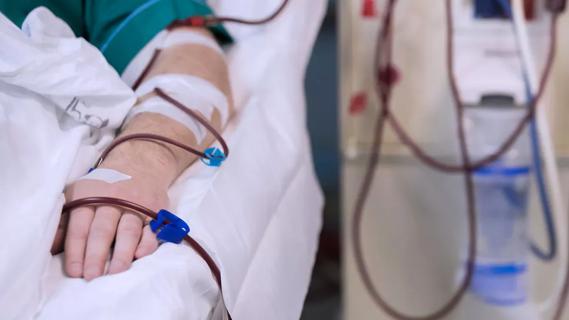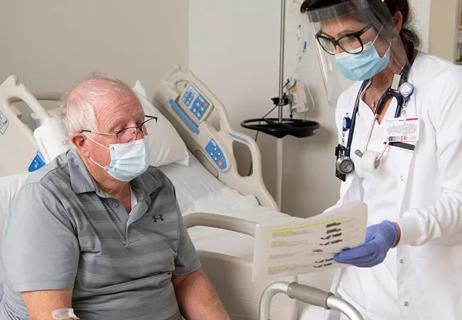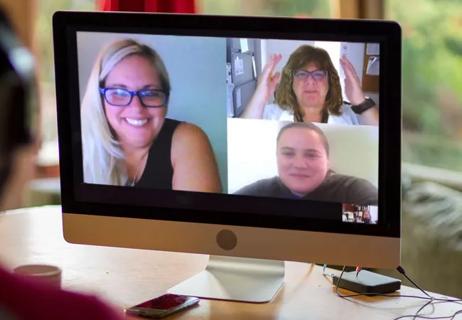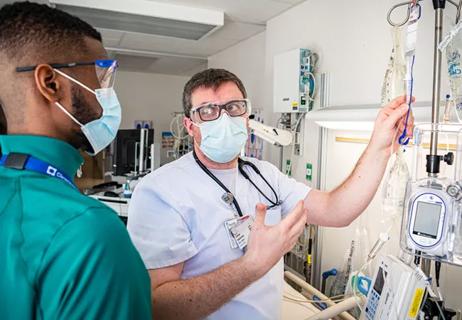Multidisciplinary interventions lead to improved care

In 2015, the average patient length of stay (LOS) in the pediatric post-anesthesia care unit (PACU) at Cleveland Clinic’s main campus was two hours, 53 minutes. Today, the LOS is two hours, 13 minutes. The pediatric PACU shaved 40 minutes off its LOS time after implementing a process improvement project to improve workflow related to postoperative pain orders.
Cleveland Clinic is a non-profit academic medical center. Advertising on our site helps support our mission. We do not endorse non-Cleveland Clinic products or services. Policy
“To decrease average length of stay to that degree is almost unheard of in a PACU,” says Kristen Vargo, MSN, RN, NE-BC, Nurse Manager on the 10-bed unit. “The clear outcome is that we are able to provide safe, effective, exemplary care to our patients.”
The pediatric PACU initiated the multidisciplinary process improvement project in the fall of 2015 after Vargo and Assistant Nurse Manager Michelle Levay, MSN, RN, CPN, conducted an audit of patient charts. The audit confirmed their belief that patients recovering in the PACU were not receiving pain medication in a timely fashion, which led to increased time to meet discharge criteria and increased time spent in the PACU.
“We had a lot of issues with patients coming out of the operating rooms without postoperative orders being written,” says Vargo. “So we had delays in patient care because we didn’t have the order and resources we needed to provide effective care.”
The audit revealed that the average time between when the patient entered the PACU and when the nurses received medication orders was 17 minutes. “That’s a significant amount of time when you have a child coming out of the operating room in pain,” says Vargo.
In addition, Vargo and Levay surveyed the 12 nurses on their unit about their perceptions of pediatric pain management practices. Some of the questions included the following:
“The survey highlighted that our nurses didn’t have the required resources to provide optimal patient care and a positive patient experience,” says Vargo. “Our nurses were in distress: They knew the importance of being able to medicate patients and make sure they are comfortable, but they had to follow procedures.”
Next, Vargo and Levay created a process map to chart all the steps nurses take related to postoperative medication. The map detailed about 30 steps, from receiving medication orders to loading medications in the Pyxis MedStation™ automated medication dispensing system, and finally medicating the patient. “Creating the process map made us realize we needed all the disciplines involved to help with the project,” says Vargo.
The process improvement project included nurses from the pediatric PACU, as well as staff from the pediatric anesthesia department, the pediatric pharmacy and surgical operations. “We learned about the issues that everyone had, worked through the barriers and ended up with a much better process,” says Levay.
The interdisciplinary team devised three main solutions to help decrease average LOS on the pediatric PACU:
The interventions were a success. In addition to reduced patient LOS, the pediatric PACU decreased the average time to meet discharge criteria from three hours, 20 minutes to two hours, 6 minutes. It also reduced annualized patient care by more than 3,400 hours and annualized RN hours (assuming a one RN to two patient ratio) by more than 1,700 hours.
Just as important as the numbers, are the benefits related to employee morale. “The changes have helped with collaboration with our anesthesia team,” says Vargo. “We can go to them when we foresee a problem and talk through it. This has truly impacted the care provided by both anesthesia and the PACU.”
In addition, the PACU’s Press Ganey nurse engagement scores have risen from a lower Tier 2 to a Tier 1. “The nurses have the resources to do their jobs and know that we are going to listen to them, understand any issues they have on the unit and work to make them better,” says Vargo.
Last year, the pediatric PACU was awarded nursing unit of the year on Cleveland Clinic’s main campus. “That’s another huge win that speaks to the mindset of our nurses and their dedication to our patients,” says Levay. “We are always looking for better ways to provide care.”

Phone triage system reduces call backs and delays in care

New protocol reduces costs, increases patient and caregiver satisfaction

New options benefit caregivers, nursing units and patients

Nurses facilitate preoperative program to educate and prepare patients for ongoing care

Introduces at-home work and new patient screening tool

Health disparities, mental health and more

Ideas for approaches to prevention, response and more

Educating and developing generations of nurses